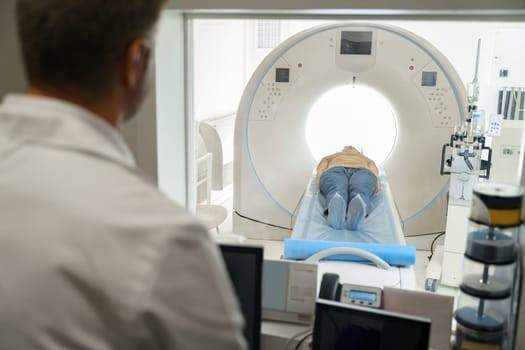PET Stress Testing
Positron Emission Tomography (PET) stress testing has emerged as a state-of-the-art diagnostic tool in the field of cardiovascular medicine, offering unparalleled precision in assessing cardiac function and blood flow. This advanced imaging technique combines the capabilities of PET scanning with stress-inducing methods, providing a comprehensive evaluation of the heart's performance and aiding in the diagnosis and management of cardiovascular diseases.
PET stress testing involves the administration of a small amount of radioactive material, typically a radiotracer, into the bloodstream. This radiotracer emits positrons, and as they interact with electrons in the body, gamma rays are produced. PET scanners detect these gamma rays, creating detailed three-dimensional images of the heart and highlighting areas with increased or decreased blood flow.
The stress component of PET stress testing can be induced through physical exercise on a treadmill or pharmacologically using medications that simulate the effects of exercise.

During stress, the PET images capture real-time data on blood flow, allowing healthcare professionals to identify areas of reduced perfusion and assess the severity of coronary artery blockages.
One notable advantage of PET stress testing lies in its ability to provide both anatomical and functional information in a single examination. The high-resolution images generated by PET scanners offer detailed insights into the heart's structure, while the dynamic nature of the scan captures blood flow patterns, contributing to a more comprehensive understanding of cardiac health. The precision of PET stress testing extends to its capability to assess myocardial viability and differentiate between scar tissue and viable heart muscle. This information is crucial for making informed decisions about revascularization procedures, such as angioplasty or coronary artery bypass surgery.
Despite the use of radioactive materials, PET stress testing is considered safe, and the exposure is carefully controlled to ensure patient safety. The benefits of detailed and accurate cardiac imaging far outweigh the minimal risks associated with radiation exposure.
In conclusion, PET stress testing represents a cutting-edge advancement in cardiovascular diagnostics, providing a precise and comprehensive evaluation of cardiac function and blood flow. By integrating anatomical and functional information, PET stress testing equips healthcare professionals with valuable insights for personalized treatment planning and improved patient outcomes in the realm of cardiovascular health.




